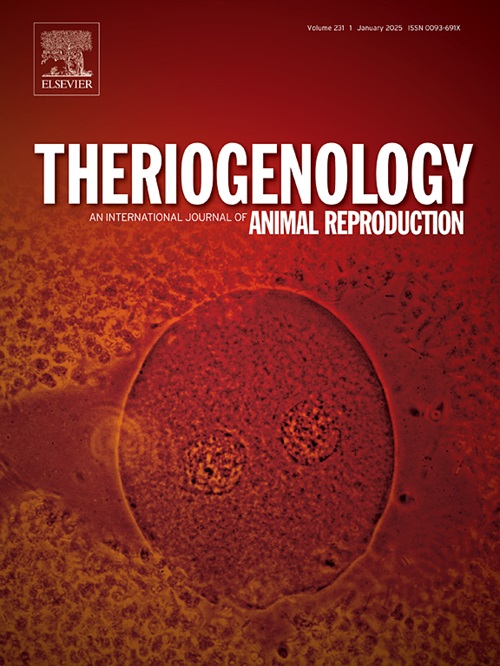NET1的减少会对小鼠早期胚胎发育产生不利影响。
IF 2.4
2区 农林科学
Q3 REPRODUCTIVE BIOLOGY
引用次数: 0
摘要
神经上皮转化基因 1(NET1)是一种 RhoA 亚家族特异性鸟嘌呤/核苷酸交换因子,在多种生物过程中发挥关键作用。然而,它在小鼠植入前胚胎发育中的功能尚未确定。本研究证明,NET1 是影响小鼠早期胚胎发育结果的关键因素。免疫荧光检测显示,NET1 在小鼠植入前胚胎发育过程中主要定位于细胞核。使用特异性 siRNA 在胚胎期沉默 Net1 会损害小鼠早期胚胎的发育能力,Net1-knockdown(Net1-KD)会在胚胎第一次分裂时诱发有丝分裂纺锤体组装缺陷和染色体排列异常。此外,NET1 的减少加剧了两细胞期胚胎中活性氧的产生和 DNA 的损伤,进一步加剧了植入前胚泡中的细胞凋亡。总之,我们的数据表明,NET1 在小鼠早期胚胎发育过程中的有丝分裂纺锤体组装、氧化应激和 DNA 损伤中起着关键作用。本文章由计算机程序翻译,如有差异,请以英文原文为准。
Reduced NET1 adversely affects early embryonic development in mice
Neuroepithelial transforming gene 1 (NET1) is a RhoA subfamily-specific guanine/nucleotide-exchange factor that exhibits critical roles in diverse biological processes. However, the functions in mouse preimplantation embryonic development have not yet determined. In the present study we demonstrated that NET1 is a key factor in the outcome of early mouse embryonic development. Immunofluorescence detection showed that NET1 is principally localized to the nucleus during mouse pre-implantation embryonic development. Silencing Net1 at the zygote stage using a specific siRNA impaired the developmental competence of early mouse embryos, and Net1-knockdown (Net1-KD) induced mitotic spindle-assembly defects and chromosomal alignment abnormalities at the first embryonic cleavage. In addition, reduced NET1 exacerbated reactive oxygen species production and DNA lesions in two-cell stage embryos, further augmenting cellular apoptosis in the preimplantation blastocyst. In summary, our data display key roles for NET1 in mitotic spindle assembly, oxidative stress, and DNA damage during early mouse embryonic development.
求助全文
通过发布文献求助,成功后即可免费获取论文全文。
去求助
来源期刊

Theriogenology
农林科学-生殖生物学
CiteScore
5.50
自引率
14.30%
发文量
387
审稿时长
72 days
期刊介绍:
Theriogenology provides an international forum for researchers, clinicians, and industry professionals in animal reproductive biology. This acclaimed journal publishes articles on a wide range of topics in reproductive and developmental biology, of domestic mammal, avian, and aquatic species as well as wild species which are the object of veterinary care in research or conservation programs.
 求助内容:
求助内容: 应助结果提醒方式:
应助结果提醒方式:


